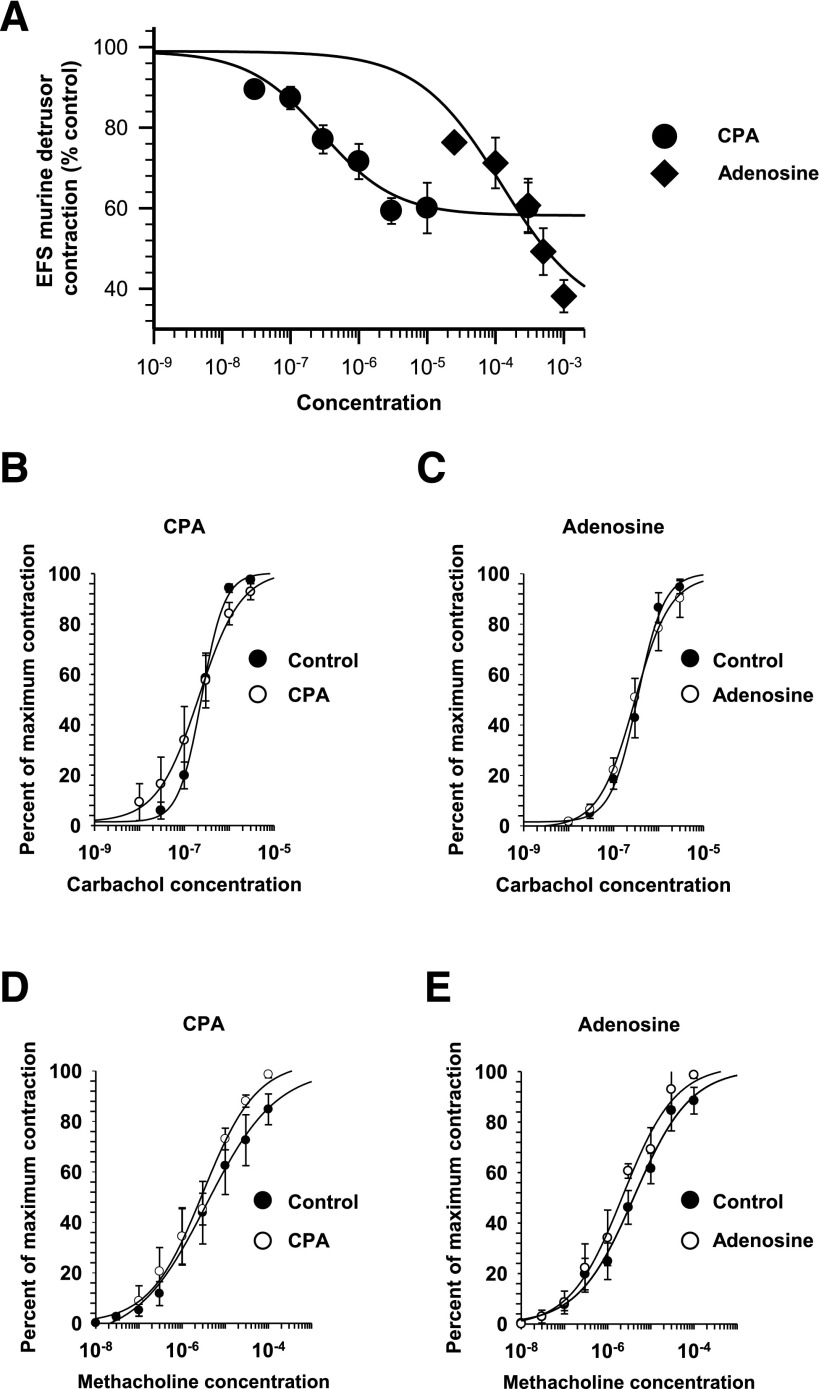Fig. 3.
The effects of adenosine and the A1-selective agonist CPA on EFS-elicited murine detrusor contractions. (A) Log concentration responses for the inhibition of contraction as a percentage of the control contractions (adenosine, n = 6; CPA, n = 5). A significantly greater maximal effect was seen for the action of adenosine on contractions compared with the maximal effect of CPA. Specifically, the maximal inhibition for CPA was 38.2% ± 4.0% of the control (n = 5) versus the maximal inhibition for adenosine, which was 60.0% ± 6.3% (n = 6; P = 0.021). (B–E) Neither adenosine nor CPA had any significant effect on contractile responses to either carbachol or methacholine. (B) For CPA, the EC50 values for carbachol were 251 ± 50 nM in the control versus 325 ± 49 nM in 3 µM CPA (n = 5; P = 0.321). (C) The EC50 values for carbachol were 251 ± 50 nM in the control versus 325 ± 49 nM in 500 µM adenosine (n = 5; P = 0.321). (D) The EC50 values for methacholine were 11.2 ± 5.7 µM in the control versus 3.4 ± 0.9 µM in 3 µM CPA (n = 5; P = 0.214). (E) The EC50 values for methacholine were 5.5 ± 2.7 µM in the control versus 2.7 ± 0.9 µM in 500 µM adenosine (n = 5; P = 0.359), and the EC50 values for carbachol were 355 ± 84 nM in the control versus 299 ± 71 nM in 500 µM adenosine (P = 0.622).

